The imposition of kinesiology tape on the knee area
Classical stabilization of knee joint
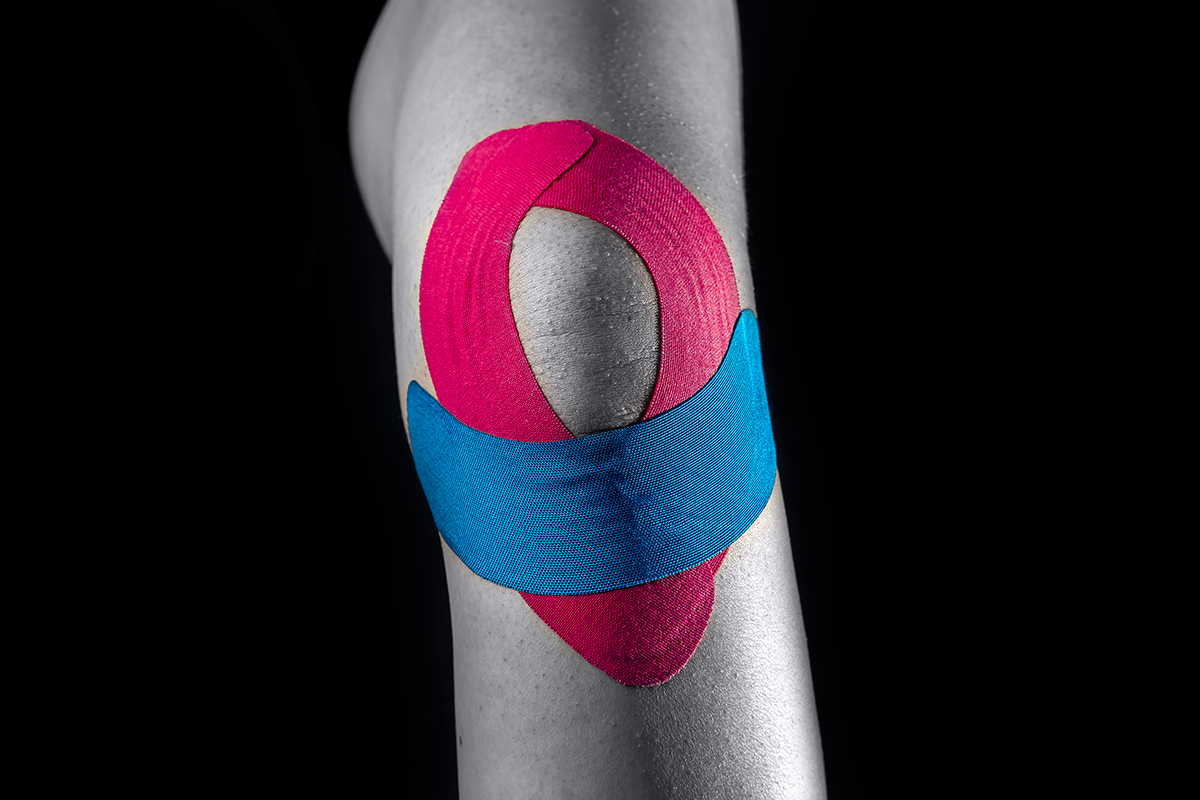
Stabilization of knee joint (2 variants)
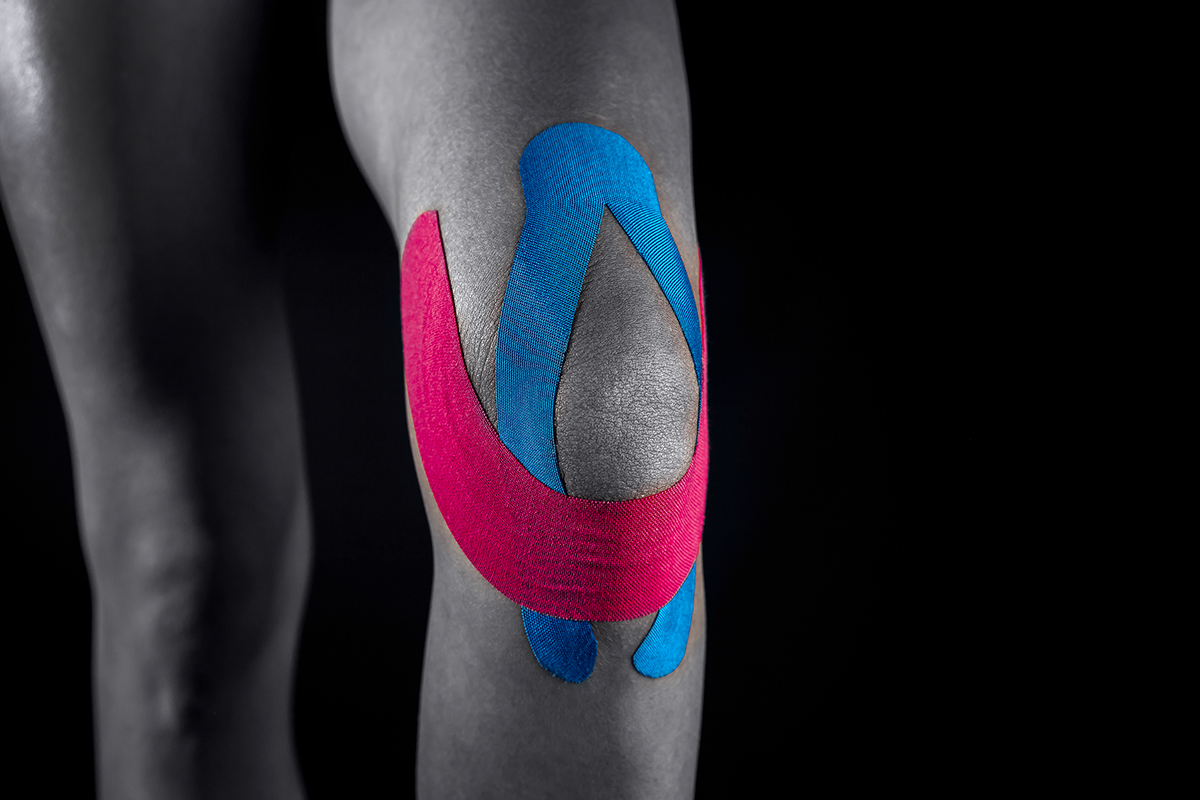
Collateral ligaments of the knee joint
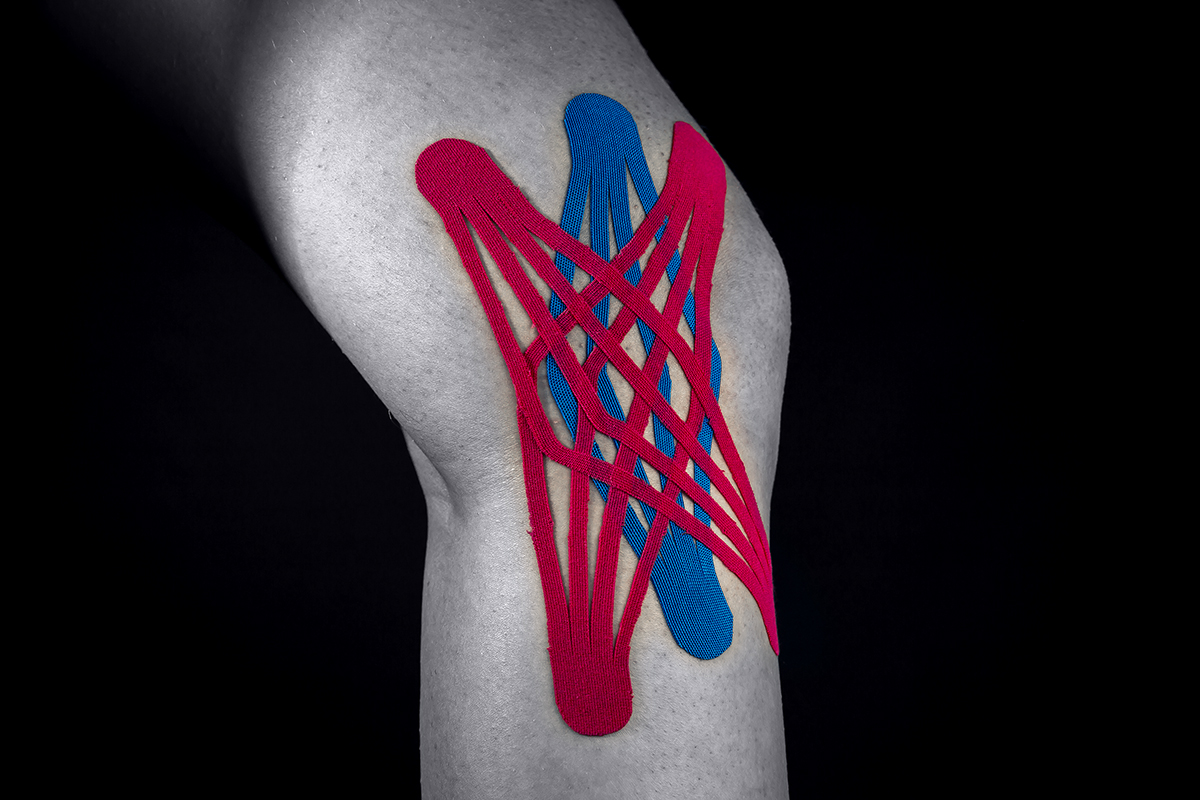
Acute injury of the knee joint
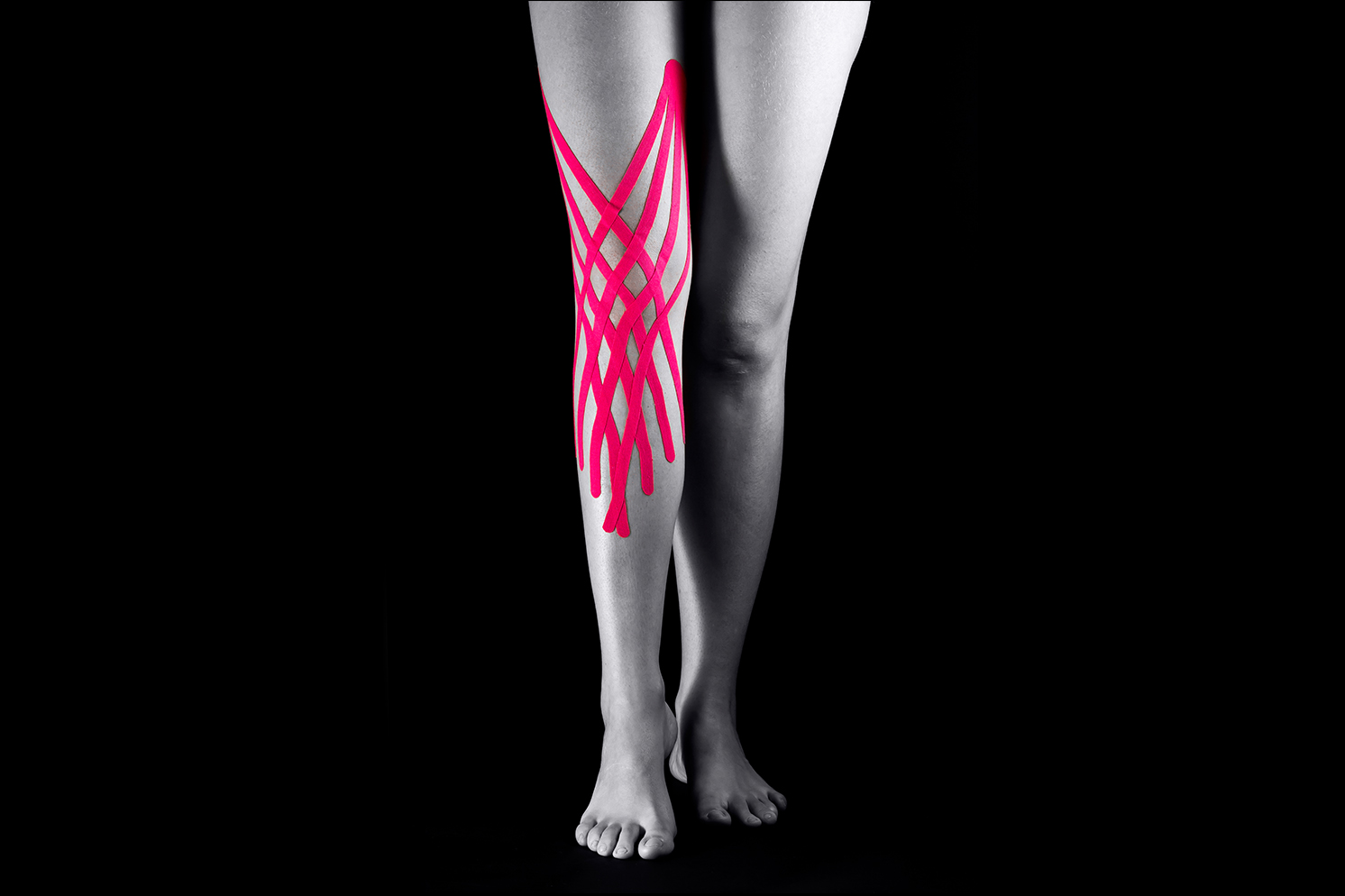
Knee bursitis
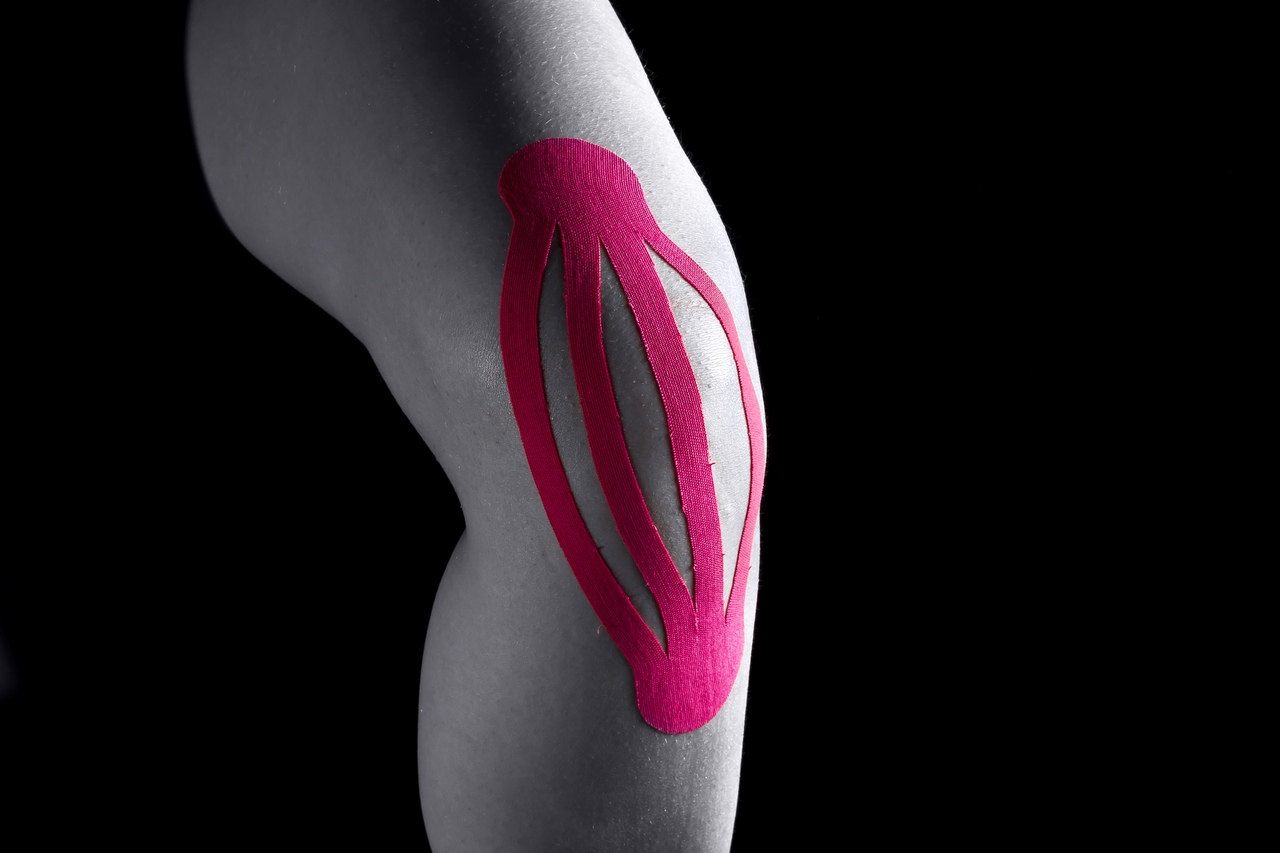
Injury of cruciate ligaments
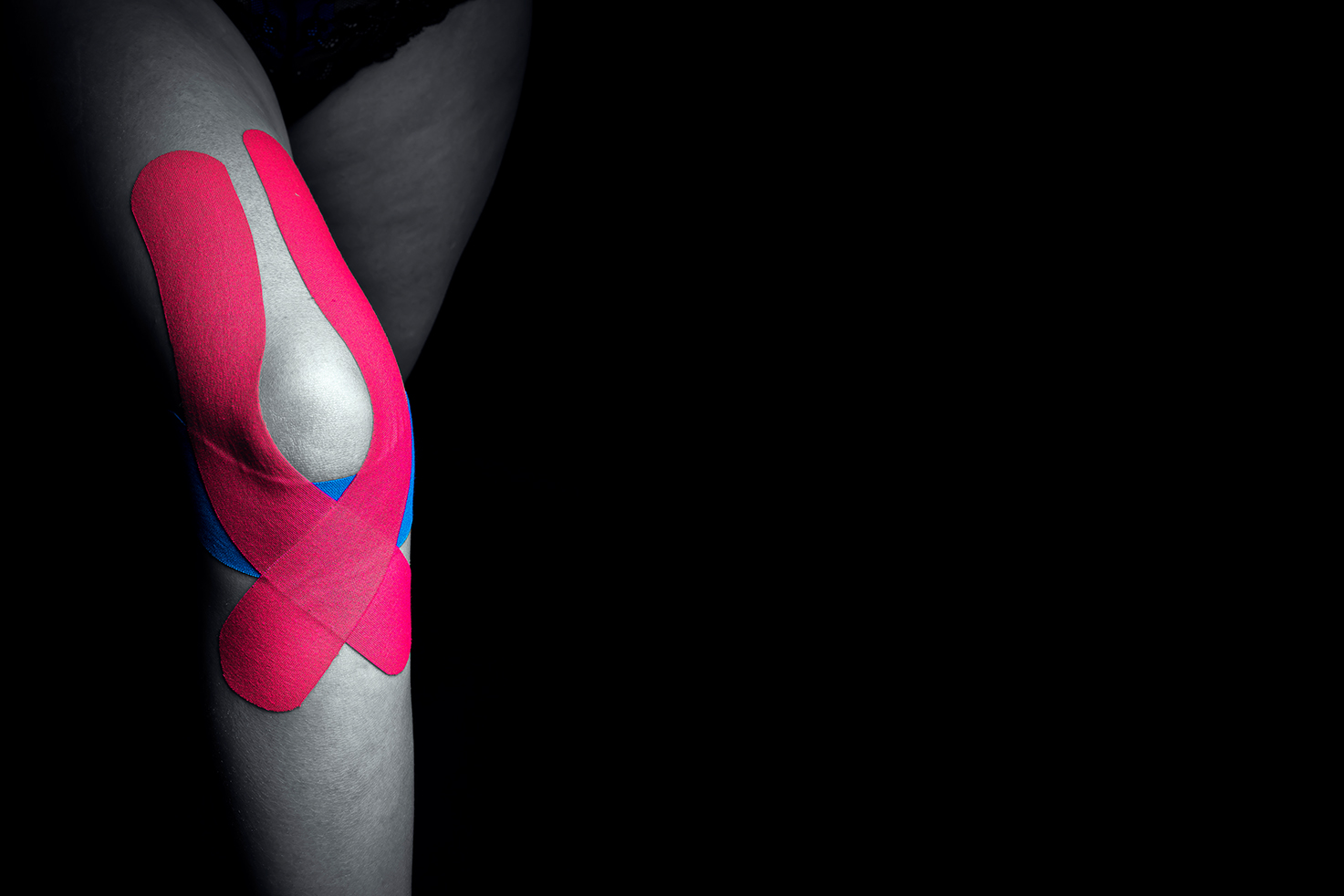
Bakers cyst
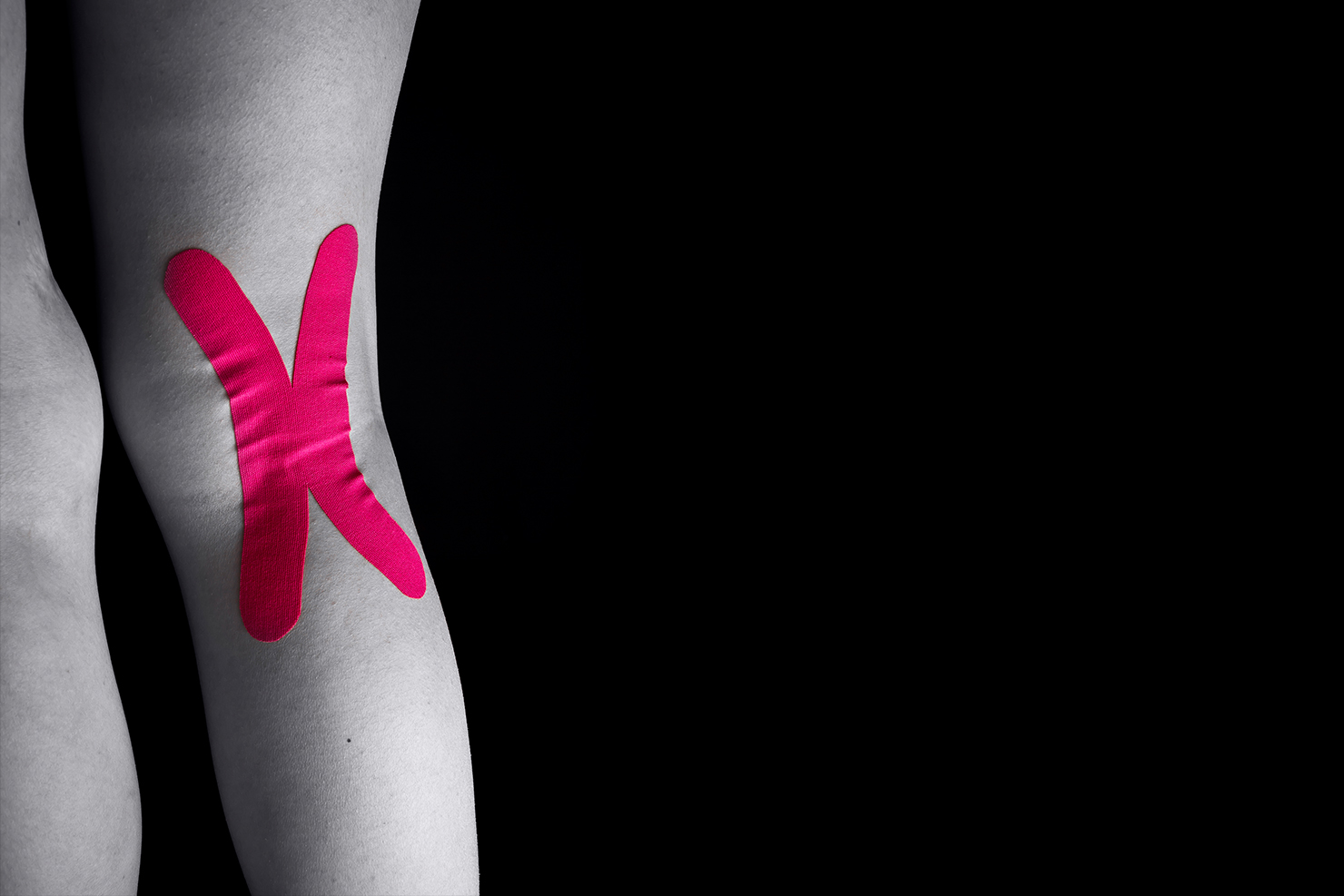
Injury of the lateral ligaments of the knee joint
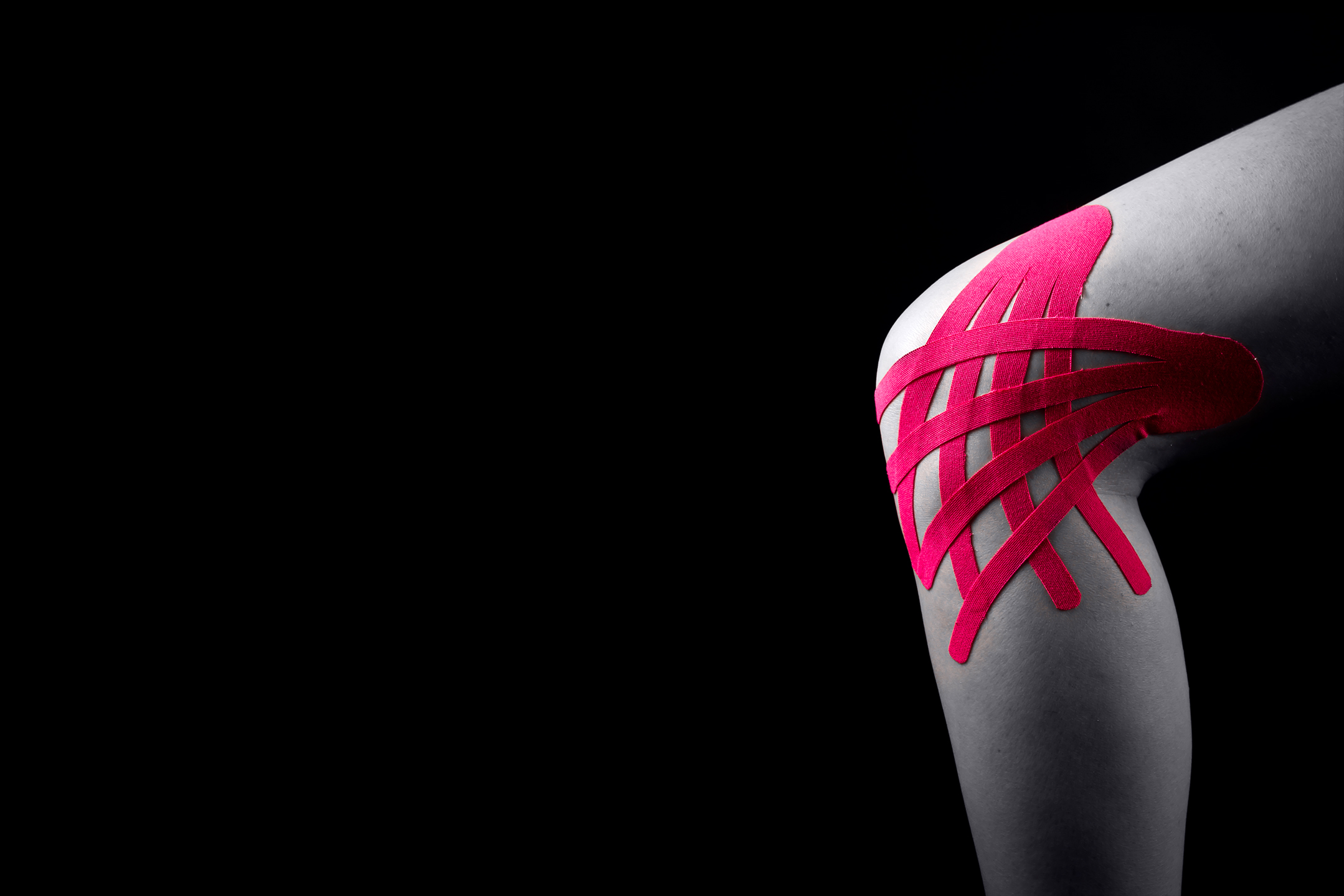
Lateral ligaments of the knee joint
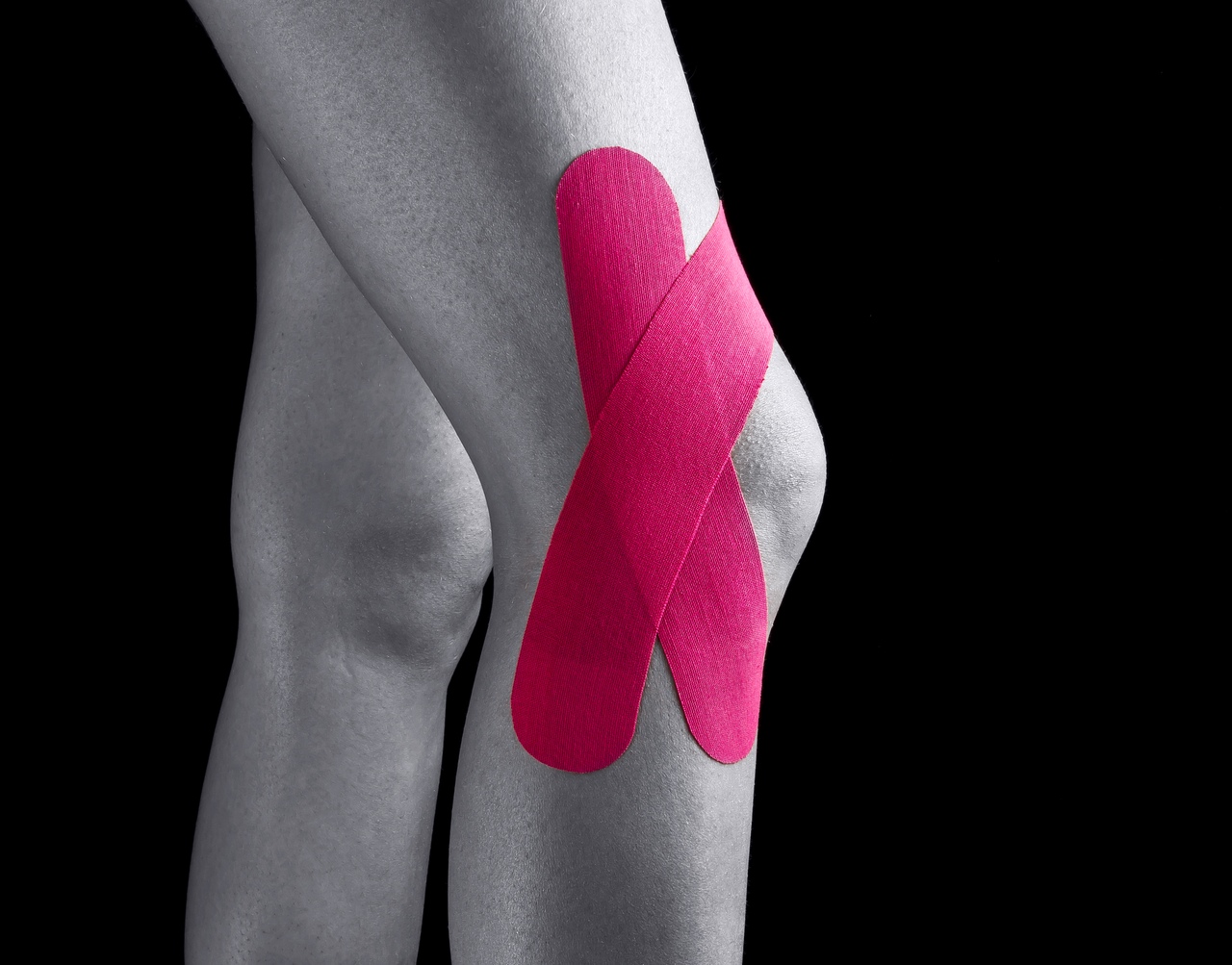

Indications: injury of the joint, pain in the joint, gonarthrosis, patellar-femoral arthrosis, rehabilitation after surgery (endoprosthesis replacement, arthroscopy)
1. This method requires three I-tapes.
2. The patient lays with his/her leg bend in the knee.
3. Apply the first two tapes using ligament method around patella.
4. Apply the third tape using ligament method in perpendicular direction to the previous two in the region of patellar ligament.
Stabilization of knee joint (2 variants)

Indications: Instability in the knee joint, rehabilitation period after surgery on damaged ligaments
1. This method requires one I-tape and one Y-tape approximately 20 cm long.
2. Position in the knee — bending up to 90 degrees.
3. Apply the tape base proximally to the knee, then apply strips of the tape with a 15 % tension around patella.
4. An operating part of I-tape is applied with tension of 75 % on tibial tuberosity. Ends of the tape are applied in the lateral and medial directions at the level of the joint without tension.

Indications: pain in the region of collateral ligaments, injury of collateral ligaments
1. This application requires 3 fascia tapes approximately 15 cm long and 2.5 cm large.
2. Apply the first tape by fascia method directly to the zone of maximal pain syndrome.
3. Apply the second and the third tape crosswise with crossing points in the zone of maximal pain syndrome.
Acute injury of the knee joint

Indications: acute injury of the knee joint (swelling), soft tissue bruise
1. Cut off two tapes approximately 25 cm long. Cut the tape into 4-5 long strips. The tape base is 4 cm, and it is left integer. The width of cut tape strips should be 0.7 cm to 1.5 cm.
2. Apply the body of the tape without tension towards the nearest frontal lymph node. In this case, these are inguinal and femoral lymph nodes.
3. Apply the strips with a minimal tension on the skin, completely covering the swelling zone.
Knee bursitis

Indications: Knee bursitis (prepatellar, suprapatellar), pain in the joint
1. In this case, we need one piece of tape 13-15 cm long.
2. After rounding of the ends, double up the tape and cut it by strips. The ends (about 3 cm on each side) are left integer.
3. Apply both bases of the tape proximally and distally to the knee.
4. Bend the limb to the maximum in the knee joint and apply strips of the tape in the region of the knee and on its sides.
Injury of cruciate ligaments

Indications: Injury of cruciate ligaments, instability of the knee joint
1. This method requires three I-tapes. The first tape is applied in order to relief the load on cruciate ligament. The next two I-tapes are applied for knee joint stabilisation.
2. The patient lays with his/her leg bend in the knee.
3. An operating part of the first I-tape is applied with tension of 75 % on tibial tuberosity. Ends of the tape are applied in the lateral and medial directions at the level of joint without tension.
4. Two another I-tapes are applied from patella to the middle third of quadriceps muscle of thigh. Bases of I-tapes are attached to tibial tuberosity. An operating part of the tapes is applied with a 75 % tension on the sides of patella. Anchors of I-tapes are fixed in the region of quadriceps muscle of the thigh.
5. Important information! The anchors of the tapes should not criss-cross.
Bakers cyst

Indications: Baker cyst
1. We need one piece of X-tape. The length depends on patient’s anatomic features.
2. The patient is in the prone position.
3. Apply X-tape in the centre of popliteal region without tension.
4. Apply lower ends of X-tape around the upper part of gastrocnemius muscle with a 15 % tension.
5. Apply upper ends of X-tape around the lower part of thigh muscles with a 15 % tension.
Injury of the lateral ligaments of the knee joint

Indications: Acute injury of the lateral ligaments of the knee joint (swelling)
1. Measure and cut two tapes equal in length. The length of 15-20 cm, depending on patient’s anatomic features. Cut the tapes into 4-5 long strips. The tape base is 4 cm, and it is left integer. The width of cut tape strips should be 0.7 cm to 1.5 cm.
2. Apply the base of the tape without tension towards the nearest lymph nodes. In this case, these are superficial inguinal lymph nodes.
3. Apply the first tape on the frontal side. Apply the strips wave-shaped on the skin without tension.
4. Perform the same with the second tape on the lateral side.
Lateral ligaments of the knee joint

Indications: Stabilisation of the lateral ligaments of the knee joint
1. This method requires two I-tapes 12-15 cm long, depending on anatomic features of the patient.
2. Ask the patient to bend a knee slightly.
3. Using ligament method, apply tapes crossways on the lateral ligaments of the knee joint in succession.
March 2020
April 2020
May 2020
 Shopping cart (0)
Shopping cart (0)
